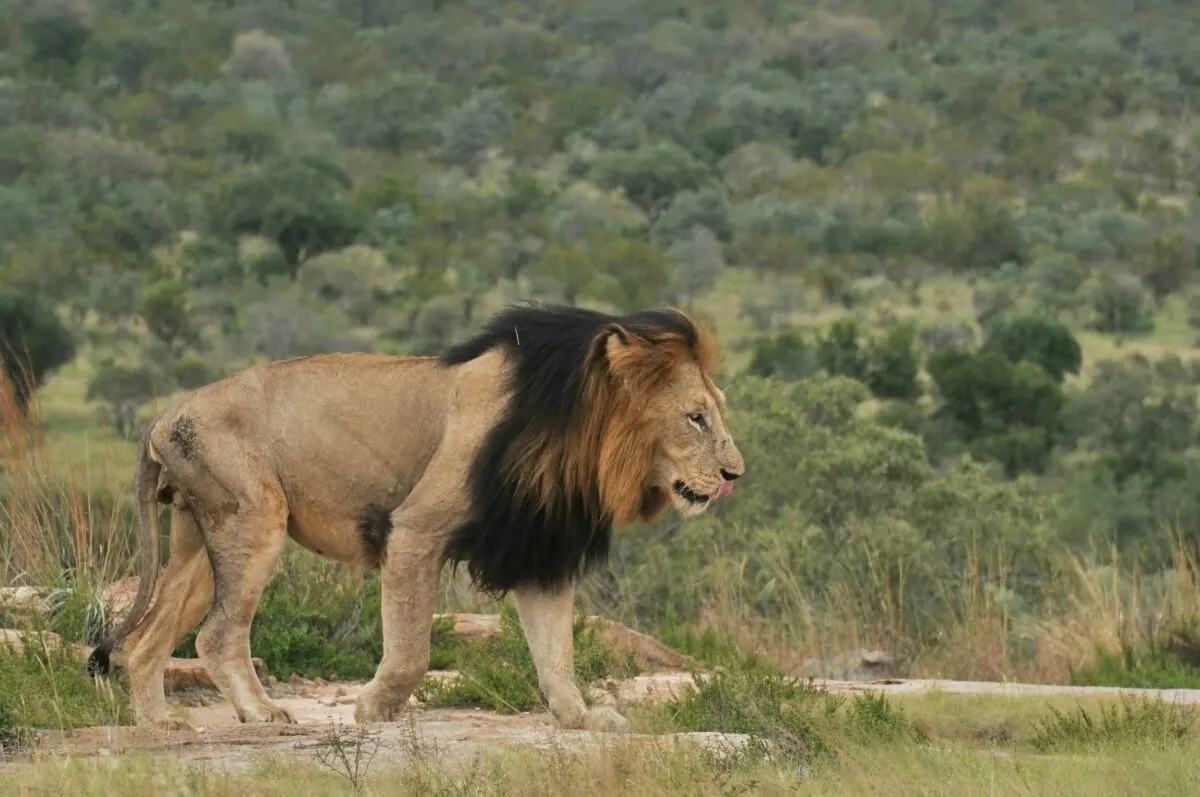In the wild, survival often depends on an animal’s ability to hunt effectively. While many predators are solitary hunters, some species have evolved remarkable cooperative hunting strategies that allow them to take down prey much larger or more elusive than themselves. These collaborative hunters demonstrate complex social behaviors, communication skills, and tactical intelligence that showcase the evolutionary advantages of teamwork. From coordinated pack hunts to sophisticated ambush techniques, these predatory alliances represent some of nature’s most impressive examples of collective intelligence. This article explores 15 predator species that have mastered the art of hunting together, revealing how their cooperative strategies help them outsmart and overpower their prey.
14. African Wild Dogs The Endurance Hunters

African wild dogs (Lycaon pictus) are among the most successful hunters in the animal kingdom, with a hunting success rate of approximately 80%—far higher than lions (30%) or hyenas (25-30%). These remarkable canids hunt in packs of 6-20 individuals, using extraordinary stamina to exhaust their prey through persistent chases that can cover several miles at speeds of up to 44 mph. What makes their cooperative hunting unique is their democratic approach—before hunts, pack members engage in energetic social interactions that researchers believe represent a form of “voting” system to decide when to hunt. During the chase, pack members rotate positions, with fresh dogs taking the lead while tired ones fall back, maintaining relentless pressure on their target. Once prey is exhausted, the pack swarms together to bring it down. Unlike many social predators, African wild dogs share their kills with minimal aggression, allowing young, old, and sick members to feed first—a remarkably altruistic behavior that strengthens their social bonds and ensures pack survival.
13. Wolves Strategic Pack Hunters

Gray wolves (Canis lupus) exemplify coordinated hunting at its finest, with pack members fulfilling specialized roles during hunts that allow them to target prey much larger than themselves. A typical wolf pack consists of an alpha breeding pair and their offspring, creating a family unit with strong social bonds that facilitate remarkable teamwork. During hunts, wolves employ strategic encirclement techniques, with some pack members steering prey toward waiting ambushers or driving them into natural barriers like deep snow or waterways. Research has identified distinct tactical roles within wolf packs: scouts locate prey, ambushers position themselves along likely escape routes, and chasers drive prey toward the trap. Wolves demonstrate impressive cognitive abilities by adapting their hunting strategies based on terrain, prey species, and weather conditions. Their coordinated approach allows them to successfully hunt animals as large as bison and moose that would be impossible for individual wolves to tackle. Wolf packs have even been observed taking turns harassing larger prey to wear it down over time—a demonstration of patience and tactical thinking that highlights their collective intelligence.
12. Lions Synchronized Pride Hunting
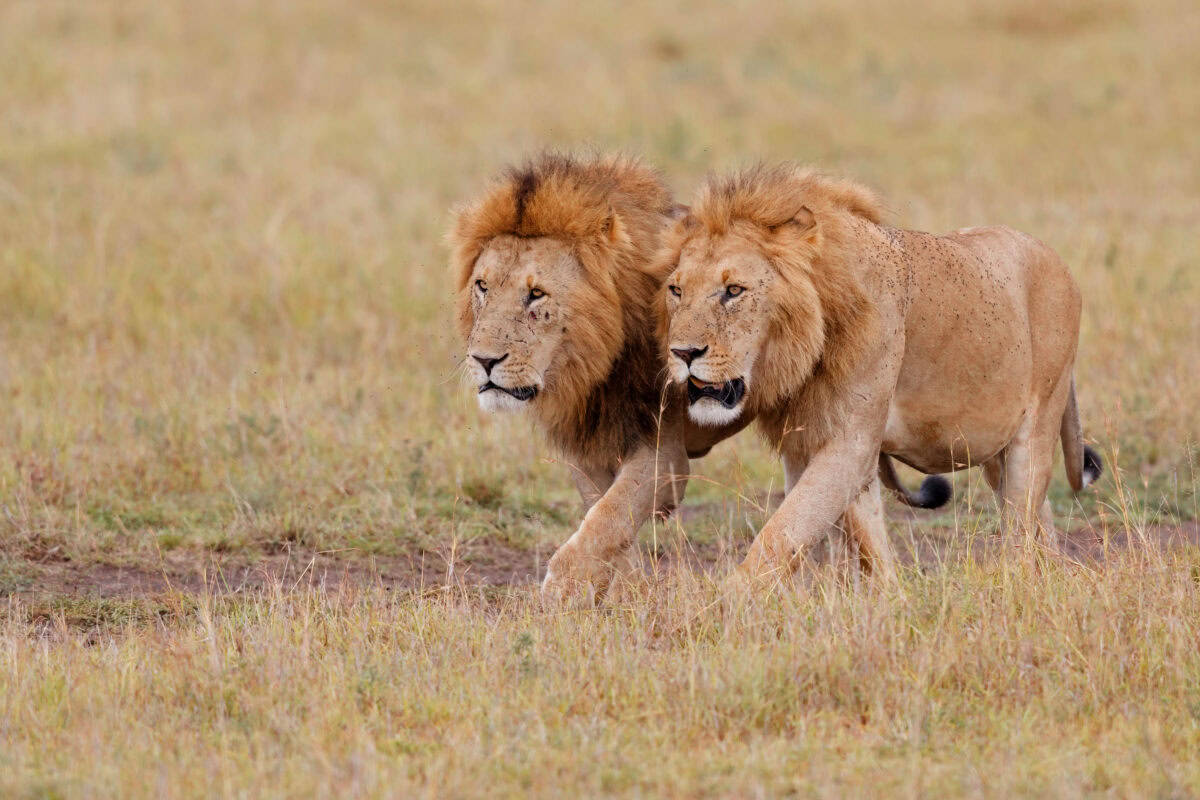
The social structure of lion prides creates one of nature’s most formidable hunting teams. While male lions often get the reputation for being lazy, it’s their role as pride defenders rather than inefficiency that explains their hunting behavior. Female lions typically perform most hunting duties, displaying remarkable teamwork when targeting large prey like buffalo or giraffes. During coordinated hunts, lionesses assume specific roles: some act as “wings” to flank prey and cut off escape routes, while others position themselves as “centers” to launch the final attack. This pincer movement creates a deadly trap for their quarry. Lions communicate through subtle body language and positioning, with experienced hunters often directing younger pride members. What makes lion hunting particularly impressive is their adaptability—they can seamlessly switch between group hunting for large prey and individual hunting for smaller animals as needed. Research in the Serengeti revealed that lion hunting success increases dramatically with group size when targeting large prey, jumping from about 15% for solo hunters to over 40% for groups of six or more lionesses working in concert.
11. Orcas Tactical Marine Specialists

Orcas (Orcinus orca), or killer whales, display perhaps the most diverse repertoire of cooperative hunting strategies among marine predators. Different orca populations have developed specialized hunting techniques passed down through generations as cultural traditions. The transient orcas of the Pacific Northwest coordinate to create waves that wash seals off ice floes, while others beach themselves temporarily to snatch seals from shorelines—a high-risk strategy requiring perfect timing and coordination. In Antarctic waters, orcas perform the “carousel technique,” where pod members herd herring into tight balls while others slap their tails to stun the fish. Perhaps most impressive is their coordinated hunting of larger whales, where family groups work together to exhaust their massive prey. Researchers have documented orcas taking turns ramming sperm whales to prevent them from diving to safety. Their hunting behaviors demonstrate remarkable problem-solving abilities, with different pods developing unique strategies adapted to local prey. The cultural transmission of these techniques represents a form of teaching, with adult orcas deliberately slowing and demonstrating hunting methods to juveniles—an example of cultural learning that rivals human teaching systems in its sophistication.
10. Harris’s Hawks Avian Team Hunters
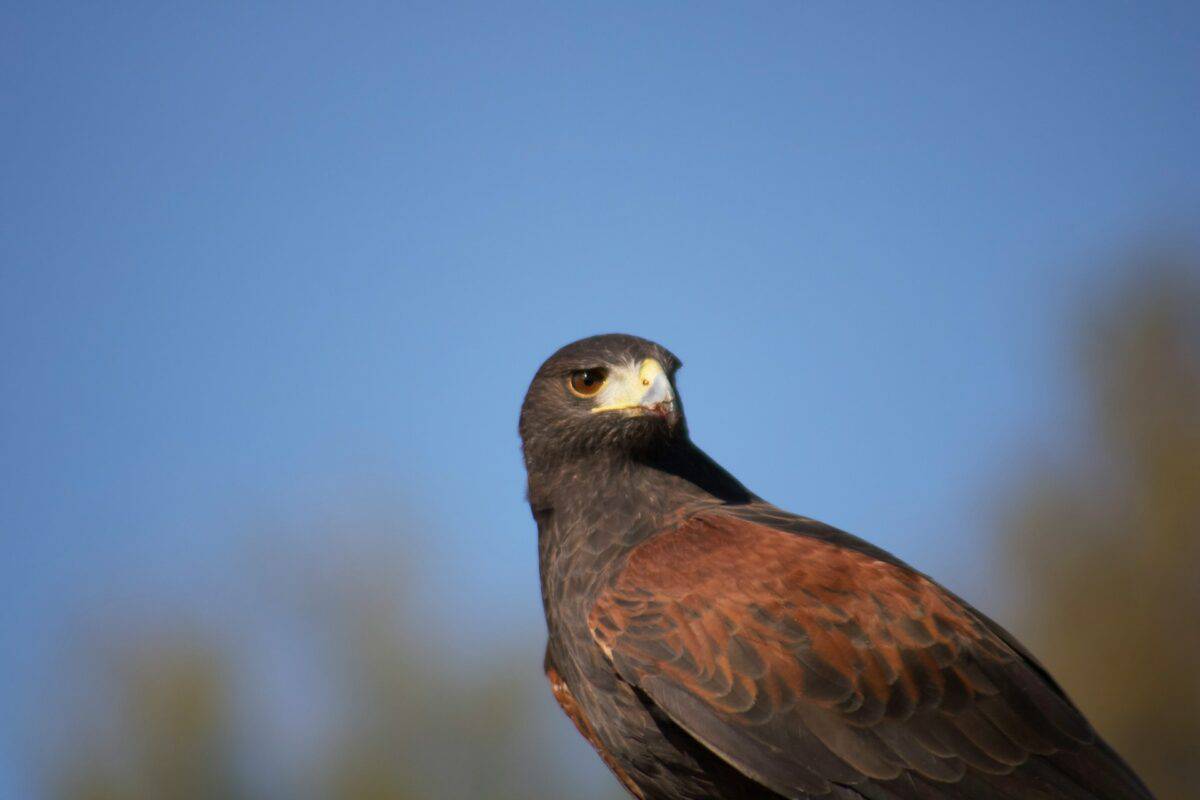
Harris’s hawks (Parabuteo unicinctus) stand out as one of the few raptor species that hunt cooperatively, employing a strategy ornithologists call “relay hunting.” These medium-sized hawks of the southwestern United States and Central America hunt in groups of 2-7 birds, using a coordinated approach that dramatically increases their success rate when targeting rabbits and other fast, agile prey. During hunts, they employ the “flush and ambush” technique where some hawks deliberately drive prey toward waiting group members. What makes their strategy particularly sophisticated is their “leapfrog” tactic—hawks take turns pursuing prey, with rested birds moving ahead while the pursuing hawk drops back when tired, creating relentless pressure that eventually exhausts the prey. They even perform coordinated attacks from multiple directions, making escape nearly impossible. This level of cooperation is exceedingly rare among raptors, which are typically solitary hunters. Research suggests their cooperative behavior evolved in response to their desert habitat, where prey is both scarce and challenging to capture. Harris’s hawks also practice resource sharing, with dominant birds allowing subordinates access to kills, reinforcing social bonds that make their hunting partnership sustainable.
9. Dolphins Synchronized Fish Herders
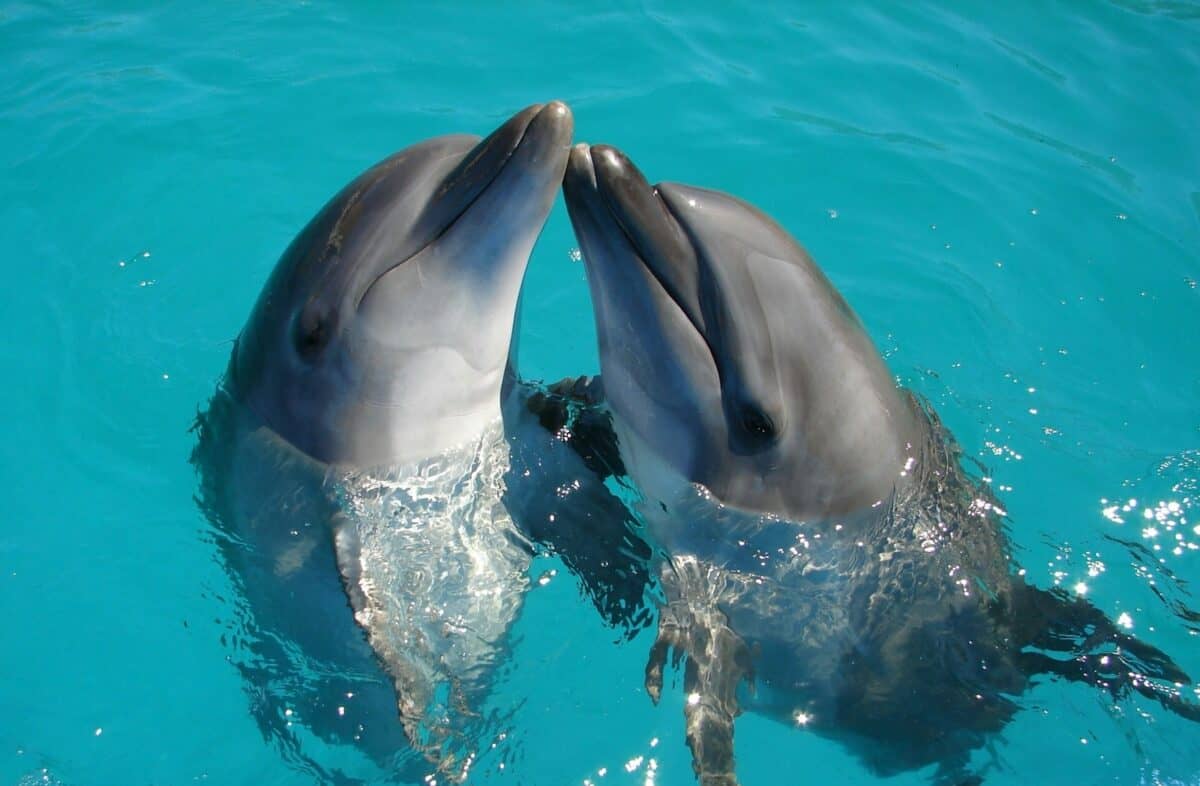
Bottlenose dolphins (Tursiops truncatus) demonstrate some of the most complex cooperative hunting behaviors in the marine world. These intelligent cetaceans use multiple synchronized techniques to outsmart fish schools. One of their most impressive strategies is the “mud ring” technique observed in Florida Bay, where dolphins coordinate to create a perfect circle of disturbed sediment that traps fish. As the dolphins swim in a circle, their tail movements stir up a ring of mud; fish, reluctant to cross this visual barrier, become concentrated in the center where dolphins take turns swimming through to feed. In other regions, dolphin pods herd fish against shorelines or coral reefs in a “pinwheel formation,” creating living barriers that prevent escape. Brazilian bottlenose dolphins have even developed cooperative hunting partnerships with human fishermen, driving fish toward waiting nets in exchange for scraps—a tradition dating back generations. Their hunting success relies on sophisticated vocalization and echolocation that allows for precise coordination. Research has shown that dolphins can recognize individual pod members by their unique signature whistles and adjust their positions accordingly during hunts, demonstrating a level of teamwork that requires significant cognitive abilities and social intelligence.
8. Spotted Hyenas Collaborative Opportunists

Despite their reputation as scavengers, spotted hyenas (Crocuta crocuta) are actually formidable hunters with complex social structures that facilitate sophisticated cooperative hunting. Hyena clans can number up to 80 individuals led by dominant females in a strict matriarchal hierarchy. When hunting large prey like wildebeest or zebra, hyenas employ division of labor—some clan members chase and isolate a target while others move to intercept along predicted escape routes. Their endurance and powerful jaws, capable of crushing bone with a bite force of over 1,100 psi, make them particularly effective at wearing down large prey. Hyenas communicate during hunts using a remarkable vocal repertoire, including whoops, grunts, and giggle,s that coordinate their movements across long distances. What makes their cooperation particularly interesting is its flexibility—hyenas can quickly switch between solo hunting for smaller prey and group tactics for larger anima,ls depending on opportunity. Research in the Masai Mara has shown that hyenas adjust their group size according to the prey being hunted, with optimal numbers of 3-5 for Thomson’s gazelles but 10-25 for zebra or wildebeest. Their adaptive strategies allow them to thrive across diverse African habitats as apex predators rather than the mere scavengers they’re often portrayed as.
7. Crocodiles Unexpected Cooperation in Reptiles
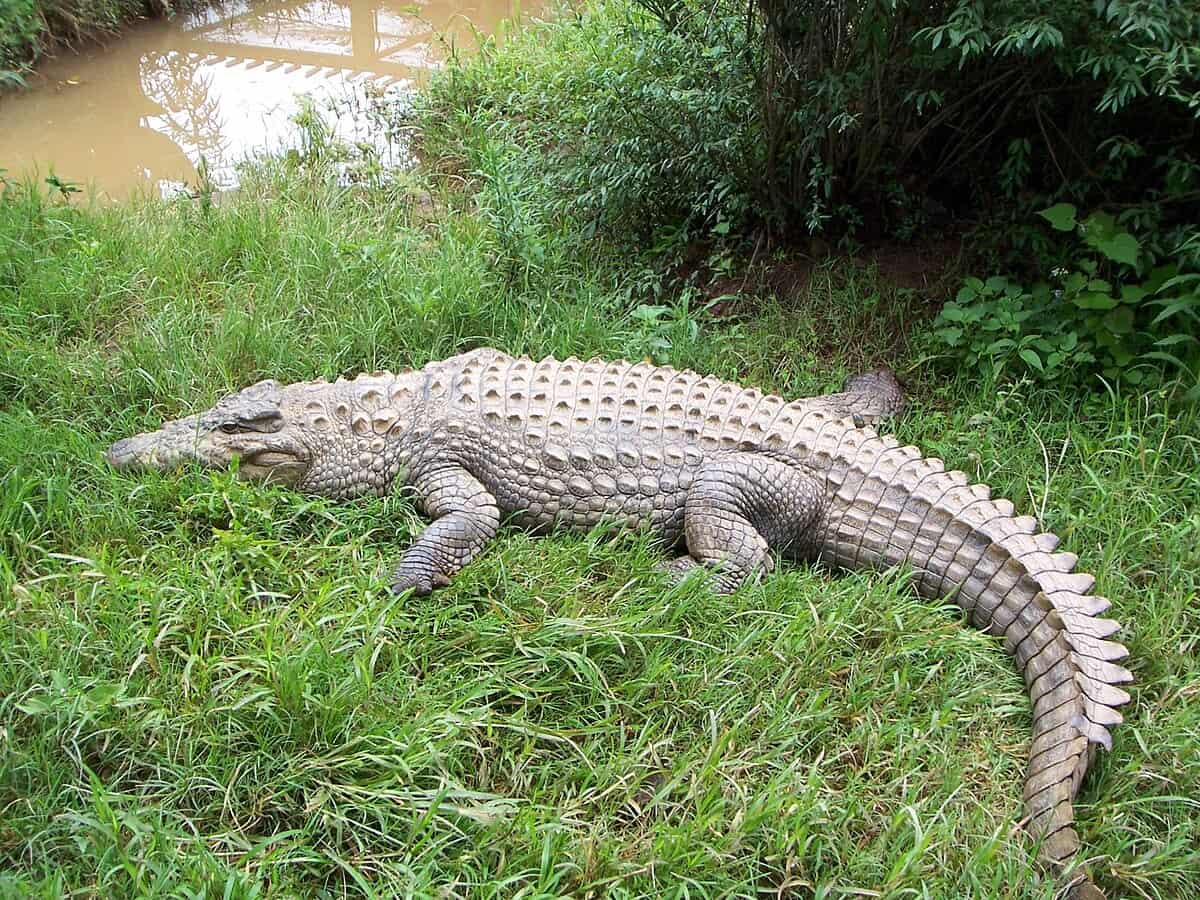
While reptiles aren’t typically known for social behavior, Nile and saltwater crocodiles display surprising levels of cooperative hunting that challenge our understanding of reptilian cognition. These ancient predators employ multiple coordinated techniques to maximize hunting efficiency. During seasonal fish migrations, crocodiles position themselves in semi-circular formations across rivers, creating living dams that trap fish for easy feeding. Perhaps their most impressive cooperative behavior is the “death roll” feeding frenzy, where multiple crocodiles grab different parts of large prey like zebra or wildebeest. Rather than fighting over the carcass, they spin in coordinated fashion, tearing the prey into manageable pieces that each crocodile can swallow. This behavior represents a form of passive cooperation that benefits all participants. Researchers have also documented “sentinel behavior” where some crocodiles appear to drive prey toward waiting group members. Fascinatingly, crocodiles seem capable of recognizing individual conspecifics and preferentially cooperate with familiar individuals—suggesting social memory previously thought beyond reptilian capability. Though the neurological basis for this cooperation differs from mammals, the functional outcome demonstrates how similar behaviors can evolve through different pathways when they provide survival advantages.
6. Chimpanzees Primate Hunting Parties

Our closest living relatives, chimpanzees (Pan troglodytes), engage in coordinated group hunting that showcases cognitive abilities approaching human strategic thinking. Male chimps form hunting parties of 3-10 individuals to target colobus monkeys and other primates in the forest canopy. Their hunts display clear role specialization, with some chimps acting as “drivers” to flush monkeys in specific directions, others as “blockers” cutting off escape routes, and the most agile members serving as “chasers” who make the final capture. Successful hunts require anticipating prey movements and understanding three-dimensional forest pathways—cognitive challenges that demonstrate advanced spatial reasoning. Research by primatologist Jane Goodall and others has revealed the social complexity underlying chimp hunting, with dominant males often initiating hunts but sharing meat to cement alliances and attract mates. The sharing of meat after successful hunts appears to follow political and social considerations rather than simple dominance hierarchies, with hunters strategically sharing with potential allies. This hints at the evolutionary origins of human cooperative hunting that eventually enabled our ancestors to target large game. Unlike many cooperative predators, chimps hunt episodically rather than for regular sustenance, suggesting their hunting may serve social and political functions beyond simple nutrition.
5. Coyotes and Badgers Interspecies Hunting Partners
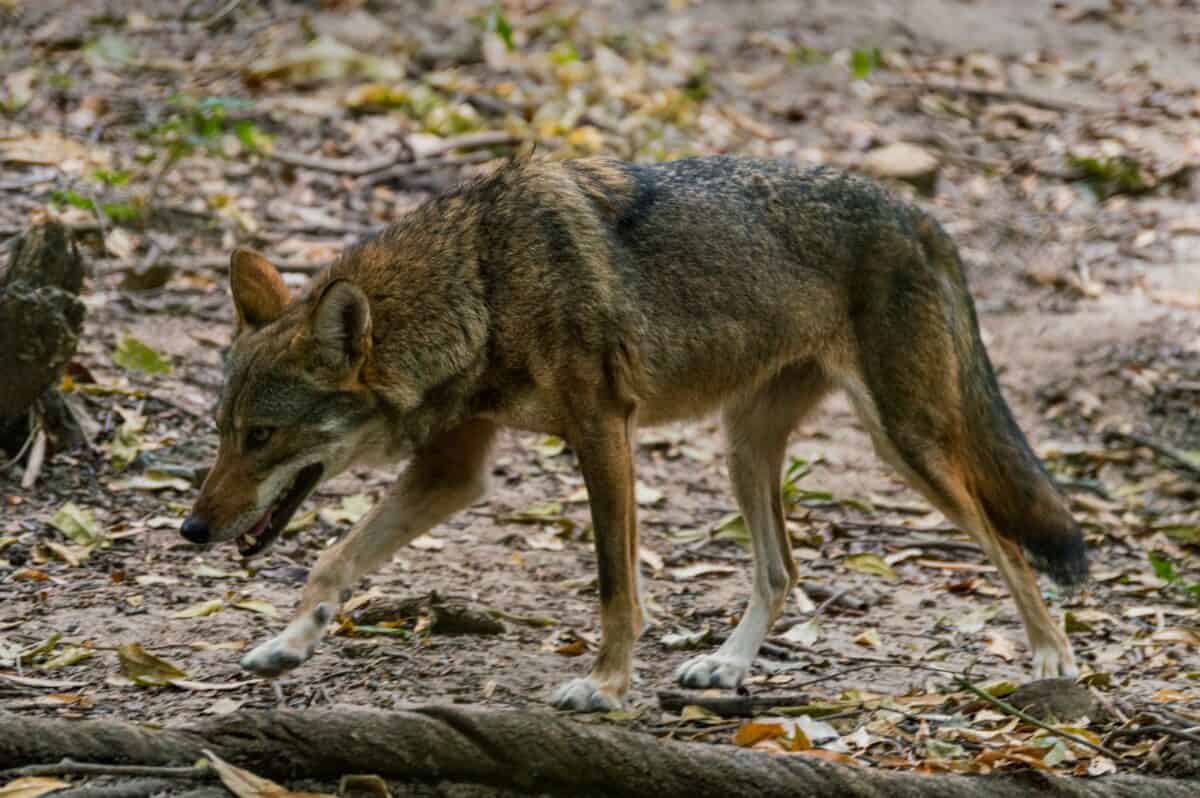
One of nature’s most remarkable hunting partnerships exists between two species that might seem like unlikely allies: coyotes (Canis latrans) and American badgers (Taxidea taxus). This interspecies cooperation represents a fascinating case of mutualism where both predators benefit from their complementary hunting styles. When hunting ground squirrels or prairie dogs, coyotes excel at chasing prey across open ground, while badgers are specialized diggers capable of pursuing prey into burrows. Working together, they create an almost inescapable predicament for their shared prey—if the prey remains underground, the badger will dig it out; if it flees across the surface, the waiting coyote will give chase. Research has shown that both species catch significantly more prey when hunting cooperatively than when hunting alone—approximately 30% more efficient for coyotes and 40% for badgers. What makes this partnership particularly interesting is that it appears to be opportunistic rather than obligate; both species recognize the mutual benefit and will seek each other out when hunting in suitable terrain. Scientists have documented coyotes and badgers traveling together between hunting sites and even appearing to communicate through body language and subtle cues, suggesting a level of interspecies understanding that goes beyond mere tolerance.
4. Pelicans Synchronized Fishing Squadrons

White pelicans (Pelecanus erythrorhynchos) demonstrate how birds can achieve remarkable hunting efficiency through synchronized movement. Unlike their brown pelican cousins who dive individually from the air, white pelicans practice a distinctive form of cooperative fishing. Groups of 6-12 birds arrange themselves in a U-shaped formation on the water’s surface, then paddle forward in perfect coordination, driving fish toward the shallows where they’re easily scooped up in the pelicans’ expansive pouched bills. As they move, the pelicans periodically dip their heads underwater in synchronized fashion, creating a moving wall of bills that prevents fish from escaping the gradually tightening corral. Studies have shown that pelicans hunting cooperatively can catch up to five times more fish per bird than those hunting alone. What makes their cooperation particularly impressive is the precise timing required—each bird must maintain exact spacing and synchronize its movements with neighbors to prevent gaps that would allow fish to escape. Researchers have noted that these hunting groups often contain the same individual birds working together repeatedly, suggesting social learning and possibly recognition of particularly effective hunting partners. This coordinated strategy allows pelicans to efficiently harvest schools of smaller fish that would be difficult to capture individually.
3. Spiders Collective Web Building and Hunting

While most spiders are solitary hunters, several species have evolved social behaviors that allow them to build massive communal webs and hunt cooperatively. The social spider Anelosimus eximius of South America creates some of the largest spider colonies known, with single webs housing thousands of individuals spanning many meters across forest gaps. These cooperative arachnids coordinate to capture prey much larger than any individual could handle alone. When an insect becomes ensnared in their shared web, dozens of spiders respond to web vibrations, with some individuals securing the prey with silk while others deliver venomous bites. Large prey items like moths or small birds trigger mass responses where hundreds of spiders work together. Australian social huntsman spiders (Delena cancerides) take a different approach, hunting without webs by forming coordinated ambush parties that surge out from under bark to overwhelm large insects. What makes these social spiders particularly interesting to scientists is that they represent independent evolutionary pathways to cooperation—social behavior has evolved separately at least 20 times in different spider lineages, suggesting strong selective pressure favoring cooperation under certain ecological conditions. Their collective hunting highlights how even invertebrates with relatively simple nervous systems can achieve complex coordination when natural selection favors group behavior.
2. Humpback Whales Bubble Net Feeding Teams
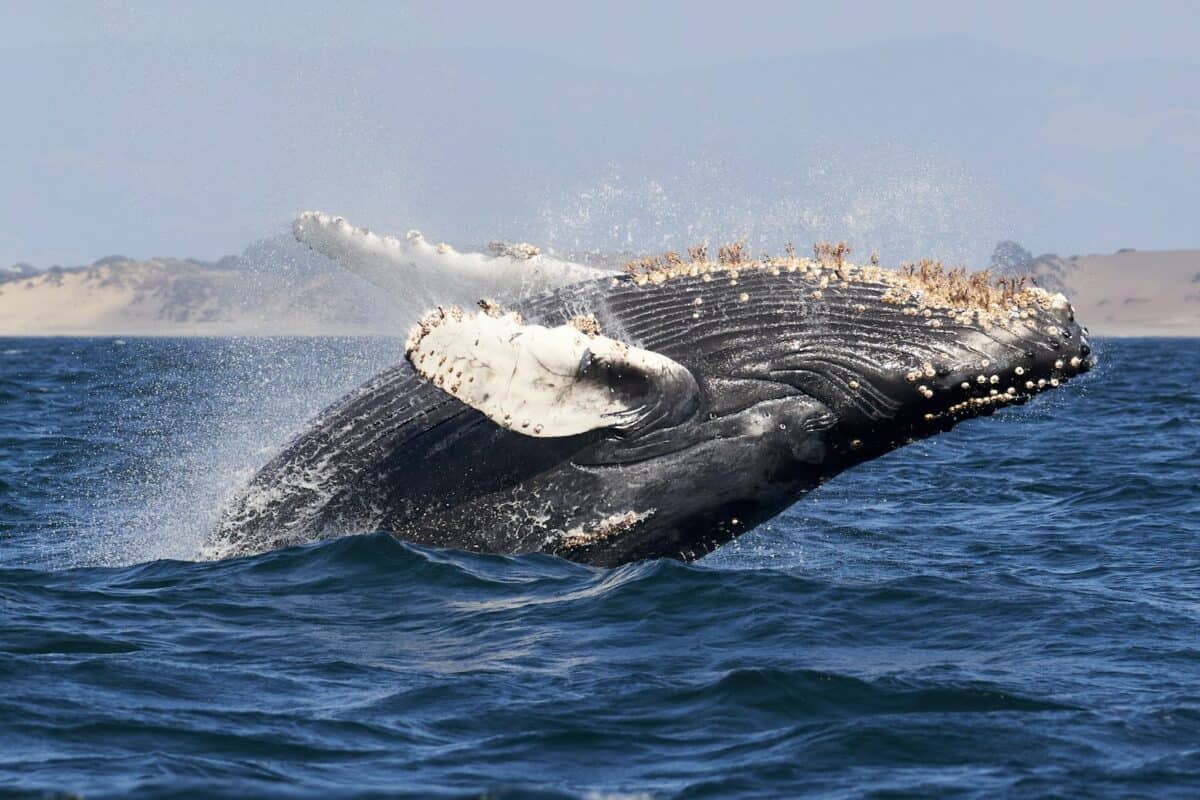
Humpback whales (Megaptera novaeangliae) have developed one of the marine world’s most spectacular cooperative hunting techniques: bubble net feeding. This elaborate strategy involves groups of 4-20 whales working in precisely coordinated roles to corral schools of small fish or krill. The process begins with whales diving beneath a prey school, then swimming in a shrinking circle while releasing bubbles from their blowholes. This creates a cylindrical “net” of bubbles rising toward the surface that concentrates prey in an increasingly tight space. Some whales maintain the bubble wall while others position themselves below the trapped prey. At the critical moment, the entire group surges upward with mouths open, engulfing massive quantities of prey in a synchronous feeding lunge. Research using digital tags has revealed that specific whales consistently perform particular roles in this hunting choreography, with experienced individuals appearing to lead the operation through acoustic signals. Most remarkable is the cultural transmission of this behavior—it’s not instinctive but learned, with different regional populations developing distinctive variations of the technique. Some groups enhance the strategy by using tail slaps to stun fish or emitting feeding calls that cause prey to cluster more tightly. This sophisticated, learned cooperative strategy represents one of the most complex feeding behaviors observed outside of human hunting practices.
1. Army Ants Nature’s Coordinated Swarm Hunters

Army ants represent perhaps the ultimate example of coordinated predation, with colonies containing millions of individuals functioning as a single superorganism during their legendary raids. Species like Eciton burchellii in Central and South America are nomadic and rely on group foraging to overwhelm prey. As they move, these ants form massive foraging columns that sweep through the forest floor like living nets, consuming virtually anything in their path—from insects and spiders to small vertebrates. Their hunting success lies in their decentralized coordination: no single ant gives orders, but rather, the colony operates through chemical signals (pheromones) and tactile cues that guide their movements and behaviors. Worker ants fulfill specialized roles—some form the outer edges of the column, others scout ahead, and still more act as transporters of captured prey back to the temporary nest. During raids, army ants can capture thousands of prey animals in a single day. Their swarm behavior exemplifies a form of collective intelligence, where simple rules followed by individuals generate highly effective and adaptive group behavior. Though brainless on their own, together, they form one of nature’s most efficient hunting machines.
Conclusion: The Power of Predatory Teamwork

Across the animal kingdom, cooperative hunting emerges as a powerful evolutionary strategy that allows predators to take down prey they could never tackle alone. Whether it’s the high-speed relay chases of African wild dogs, the role-based ambushes of chimpanzees, or the synchronized bubble nets of humpback whales, these behaviors demonstrate that intelligence and coordination aren’t exclusive to humans. In fact, the diversity of cooperative techniques—from interspecies alliances to culturally transmitted skills—highlights just how deeply nature values teamwork. These predators don’t merely hunt together—they communicate, adapt, learn, and sometimes even teach. Their success reminds us that survival doesn’t always favor the strongest or fastest, but often the most connected. Teamwork, it turns out, is one of evolution’s most effective weapons.
- 10 Animals That Risked Their Lives to Save Humans - August 9, 2025
- 14 Reasons Why Bears Are Afraid of Humans (Most of the Time) - August 9, 2025
- 11 Frogs That Look Too Weird to Be Real - August 9, 2025

